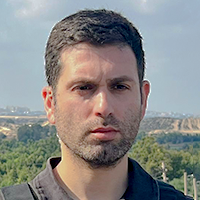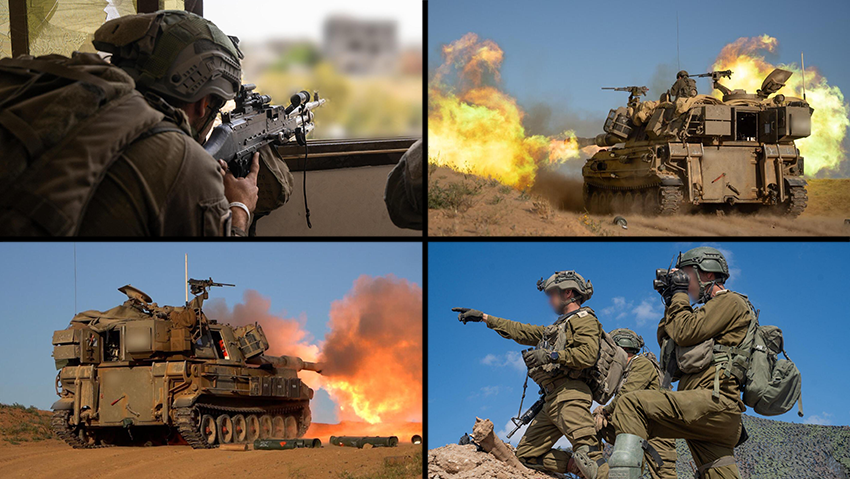Getting your Trinity Audio player ready...
A few hundred meters separate the border fence with Gaza and 15 new IDF outposts constructed in the past year, in what was defined as the buffer zone that would prevent the next Hamas massacre like the one on Oct. 7. But the fatal incident on Saturday in which an explosion killed Warrant Officer G'haleb Sliman Alnasasra was a reminder of how dangerous this area is.
Hamas terrorists emerged from a tunnel and fired an RPG at a military vehicle traveling without anti-tank fire protection. Three combat soldiers were seriously hurt in the attack. Exactly 28 minutes later, an IED was detonated near the force that was dispatched to the scene to secure the soldier's transfer to the hospital. Alnasasra was killed and two others were badly hurt. The terror squad succeeded in escaping capture and fled to nearby Beit Hanoun.
This kind of event could be repeated in the new security zone on the Gaza side of the border, all along the Strip. The outposts built on land elevations are meant to absorb any attack from Hamas or the Palestinian Islamic Jihad (PIJ) against communities on Israel's side of the frontier.
Because of the limited fighting that resumed in Gaza last month, Hamas forces reverted to defensive tactics and retreated into the populated areas housing displaced civilians. But the terror factions are not shy about attacking troops in guerrilla warfare when they have a chance.
Hamas likely planned the fatal attack well, including surveillance of troop movements to and from the outposts. They identified the military's activity near a tunnel adjacent to the position and probably used the tunnel to escape before it was destroyed. The IDF had destroyed quite a few tunnels near the border in the past year, including two in the past month, but it is clear that more tunnels remain under the troops' feet.
IDF destroys a Hamas tunnel in Gaza
(Video: IDF)
"It is much easier for the enemy to attack our static, manned positions that are clearly seen from the Gaza side of the buffer zone," an IDF official explains. "Hamas plans attacks against these outposts and while that possibility is taken into consideration, as time goes by, soldiers are less vigilant. They are on a mission to defend the border and not on the offensive and are therefore more exposed."
The outposts are manned by infantry forces and surrounded by tanks. Because of manpower restrictions, deployment is minimal and is mostly made up of units of soldiers in the reserves.
Conditions are good, the barracks are protected, and food is delivered from Israel, although soldiers do complain. "We are trying to diversify food suppliers," a military spokesman says.
One of the key issues with these outposts is their temporary nature: not all of them have overlapping fields of fire or mutual coverage in case of an incident, due to the large distances between them and from the battalion responsible for their oversight on the Israeli side of the border. The IDF is also sometimes forced to relocate these positions for operational reasons, as happened during last month’s partial takeover of the Netzarim Corridor, which led a reserve unit to vacate one outpost and redeploy to a new checkpoint on the Salah al-Din route.
Get the Ynetnews app on your smartphone: Google Play: https://bit.ly/4eJ37pE | Apple App Store: https://bit.ly/3ZL7iNv
Southern Command officials say the buffer zone—established through the flattening of tens of thousands of dunams of built-up and agricultural land in Gaza by the IDF—has not yet been formally institutionalized. However, since the end of the ceasefire, soldiers stationed there have been granted broader rules of engagement, including increased freedom to open fire.
“The fighters are carrying out frontline defense from these outposts, detecting enemy presence throughout the day using various tools, closing operational loops, and helping eliminate dozens of terrorists in recent weeks,” the command said. “This activity provides significant operational and intelligence value for future offensive missions deeper inside the Strip, including the identification of new tunnel shafts and potential ambush points.”







